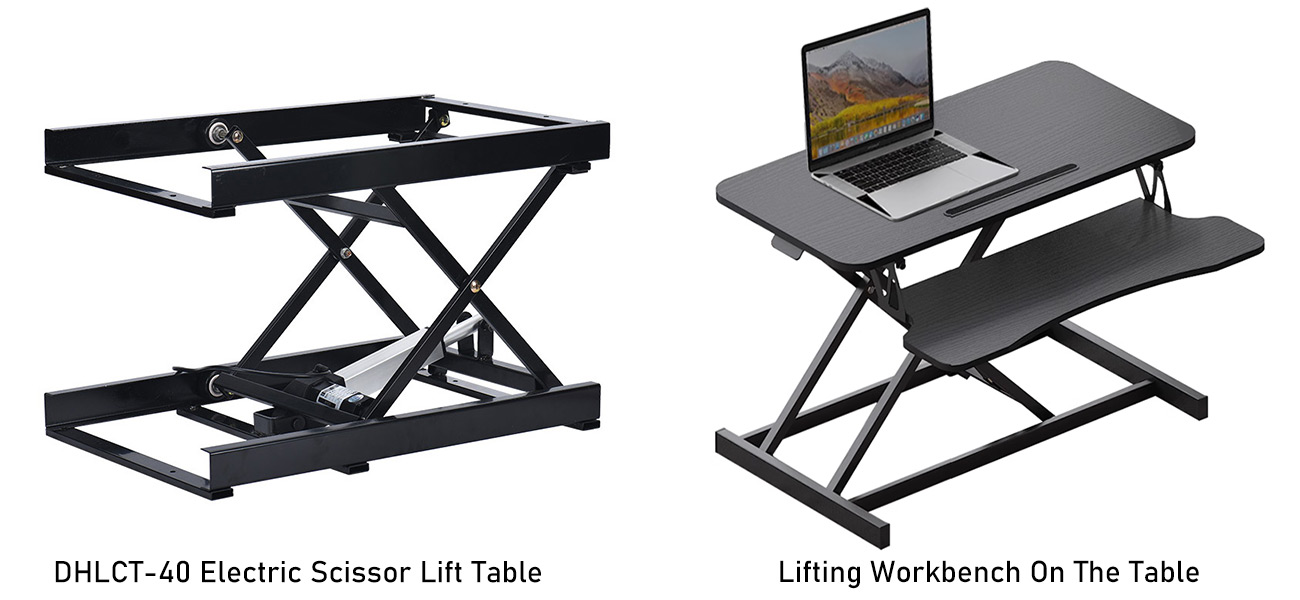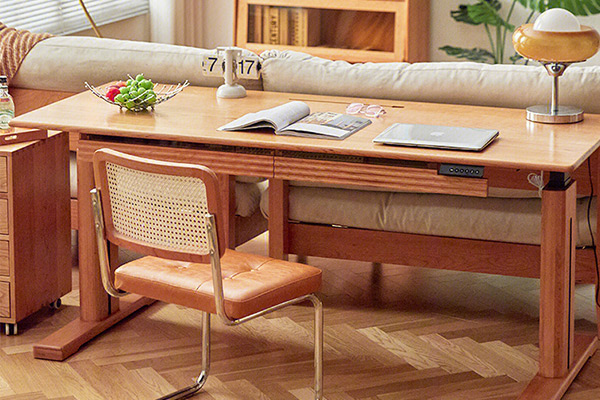How to DIY Lifting Workbench on the table with electric scissors lift table?

Nowadays, people working in offices are facing or are suffering from long-term sitting. People who sit in a bad position for a long time can easily lead to cervical and lumbar vertebrae soreness, obesity, myopia, etc., which reduces the quality of life. Standing office has emerged as a result, advocating that office workers can alternate between standing and sitting postures. Switching standing postures can provide more oxygen-containing blood to the brain, reduce pressure on blood vessels, improve work efficiency and help health. To achieve standing office, you need a magical tool: a Lifting Workbench on the table.
The following is a step-by-step solution for using an electric scissors lift table DIY standing desk workbench, for reference only:
1. Material preparation
Core Components
Electric scissors lift table: Preferred metallic styles with a load bearing capacity of ≥20kg and a height adjustment range of 60-120cm to ensure smooth lifting and lowering.
Desktop panel material: 15mm thick wood panel/density board is recommended, the size is recommended 80×60cm (adapted to monitor + keyboard and mouse).
Fixing tools: Stainless steel angle code, M6 screw and nut set, anti-slip silicone gasket
Auxiliary accessories: Cable storage tube, monitor bracket (optional).
2. Assembly process
Measure the fixed hole distance at the top of the electric scissors lift table and drill holes at the corresponding position at the bottom of the table.
Use corner codes to connect the desktop and the brackets to focus on strengthening the four-corner load-bearing area.
Functional Enhanced Design
Add anti-slip pads to the bottom of the bracket to prevent displacement during lifting.
Use a cable ties to secure the power cord to the bracket beam to keep the wiring neat.
3. Safe Debugging
Lift stability test
Repeat 10 times in no load state to observe whether there is any lag/anomaly sound
Loading 20kg of heavy objects to test load bearing limit.
Ergonomic optimization
When standing in office, the recommended adjustment range is 95-115cm.
When using the seat, it is lowered to 72-75cm, and it is equipped with adjustable height seats.
4. Note
Avoid frequent and rapid switching of heights during lifting and lowering, and prevent the motor from overheating (electric model).
Check the tightness of the screw every quarter, and apply thread glue to reinforce if necessary.
Wooden tabletops need to be regularly waxed to prevent moisture and prevent deformation from affecting lifting accuracy.
The DIY Lifting Workbench on the table with DHLCT electric scissor lift can adjust the height at will and has good load-bearing capacity. Having a Lifting Workbench on the table helps to achieve healthy office work.
-

How to DIY Lifting Workbench on the table with electric scissors lift table?
-

How to DIY Lifting Workbench on the table with electric scissors lift table?
-

How to DIY Lifting Workbench on the table with electric scissors lift table?
-

How to DIY Lifting Workbench on the table with electric scissors lift table?

